One of our very favorite day hikes in British Columbia is the Asulkan Valley Trail in Glacier National Park. Wait, Glacier National Park?! Exactly. There are two parks with the same name: the more well-known of the two is in Montana, but the other one is on the other side of the border, in British Columbia. Glacier National Park of Canada.
We quickly got obsessed with this park. It’s off the main tourist path through the Canadian Rockies and further from the Icefields Parkway. It makes for a great stop on a drive from Vancouver to Banff though (and that’s how we discovered its existence). You can enjoy amazing mountainous landscapes and glacier views here, and much more solitude than in any of the famous parks along the Icefields Parkway.
Best accommodations for Glacier National Park:
- Luxury: Sutton Place Hotel Revelstoke Mountain Resort (Revelstoke) or Golden Acres Mountain Lodge (Golden)
- Mid-range: Swiss Chalet Motel (Revelstoke) or Holiday Inn Express Golden-Kicking Horse (Golden)
- Budget: Alpine Inn & Suites (Revelstoke)
The Glacier National Park of British Columbia is located in the wild Columbia Mountains, and it offers various hiking trails into the heart of the beautiful wilderness. Asulkan Valley Trail is among the most scenic hikes in the park, and this is your detailed guide to it.
Who is the Asulkan Valley Trail for?
It’s an insanely beautiful trail with epic views, and you’ll meet very few other people along the way. Glacier National Park trails are not very busy in general, and the more challenging the trail is, the fewer people you meet there.
The Asulkan Valley Trail is a strenuous hike, not very long (7 km one-way), but with considerable elevation gain, especially in the last stretch before Asulkan Cabin. If you love conquering high mountain trails (and all the scenery that comes with it) and are moderately fit, the Asulkan Valley Trail is awaiting to impress you.
Though it’s called a “valley trail”, and it does lead you through a fairy tale valley, you’ll ascend above it, reaching the alpine and getting an astonishing panorama of the snow-capped peaks.
You are likely to meet with marmots in the valley in summer, and it’s bear country, as well, like the rest of the Rockies, so keep your eyes open for black bears and grizzly bears,and know how to stay safe.
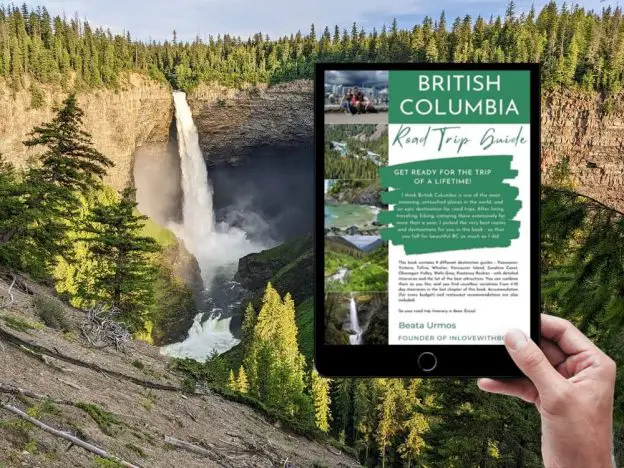
BC Trip Planning is Overwhelming. So We Did It For You.
Our compact guide delivers step-by-step itineraries to BC’s best sights and hidden gems.
Asulkan Valley Trail hiking guide
Get to the trailhead: Illecillewaet Campground
The Trans-Canada Highway goes right through Glacier National Park. Turn right onto Illecillewaet Campground Road to find the parking area and trailhead for the Asulkan Valley Trail (and several other trails, too).
sunbathing marmot 🙂
The trailhead parking can fill up quickly on a summer day. Even though Glacier National Park is not nearly as busy as any other parks in the Rockies, this parking is quite a small one. Overflow parking is possible on the side of the road, not far from the parking lot. If you stay at Illecillewaet Campground, like we did, you’re right at the trailhead.
A wide road begins after the campground, and you’ll cross rushing Illecillewaet River. Several trails start here, so watch out for the signs, they are all clearly marked. As you head towards the Asulkan Valley Trail, you’ll cross a meadow with ruins. They are the remains of Glacier House, a 90-room resort, in operation until 1926, and demolished in 1929.
The Meeting of Waters Trail starts at the end of this meadow, and I recommend doing it after your Asulkan Valley hike. It’s a short, lovely walk at the meeting of two glacial creeks. But leave it for your way back, start with the longer hike first.
Hike in the Asulkan Valley
The Asulkan Valley Trail starts in the forest. It meanders along Asulkan Brook all the way through the valley, and the best part starts when you leave the forest behind. Until then the hike is lovely, after that it’s breathtaking!
The lush green valley is surrounded by snow-capped mountain peaks and glaciers, and you’ll see multiple waterfalls coming down the slopes, fed by snowmelt. Asulkan Brook rushing down in the valley is a pretty sight, too, and wildflowers are blooming all around you.
It’s a steadily ascending path, but not too steep. Even if you decide to turn back as the trail climbs above the valley, this part of the hike is delightful and worth doing on its own. But we highly recommend continuing, because the views are only getting more dramatic.
You’ll cross Asulkan Brook on a metal bridge, and the ascent steepens from then on.
Hike up to Asulkan Hut on the ridge
The last section of the trail (about the last 2 km) climbs the narrow crest of a moraine towards the Asulkan Cabin. It’s a fairly steep climb through shorts switchbacks, and you’re fully exposed. You’ll get a fantastic reward though: the views all the way up are worth the effort without doubts.
Finally, ahead of you is Asulkan Pass and the Asulkan Hut sitting on top of a moraine of Asulkan Glacier – and the “End of the trail” sign. There you get close views of Leda Peak, Pullox Peak and Castor Peak. Further you can admire 3284 meters high Mount Sir Donald, Avalanche Mountain and Eagle Peak.
It can get very windy up here. The benches on the porch of the Asulkan Hut are relatively sheltered, and there’s also a very scenic outhouse near the hut. Then you return the same way, optionally taking the Meeting of the Waters Trail back to Illecillewaet Campground towards the end of the hike.
As you can see in our pictures, we noticed that clouds were gathering and the sky was getting darker as we were admiring the views. It was time to head back. It poured down on us as we were descending on the ridge, and after a glorious, sunny morning, we hiked all the way back in pouring rain.
Hiking essentials:
- Trailhead: Illecillewaet Campground
- Length: 14 km return
- Elevation gain: ~960 m
- Difficulty: strenuous
- See the Asulkan Valley Trail map here.
How difficult is the Asulkan Valley Trail?
Even though Parks Canada rate is a moderate hike, it is so compared to the rest of the trails in Glacier National Park. I’d rather say it’s strenuous, the total elevation gain is almost 1000 meters in 7 km, and the last stretch of the path is steep and quite exposed.
It’s a full day hike, and you should bring plenty of food, water and extra layers. But it rewards you with stunning views all the way up (and down), and it’s absolutely worth the effort. Despite being a typical non-kid-friendly hike, our 3-year-old son hiked the majority of the trail in the valley, then Csaba carried him up the crest. Alternatively, you can only hike through the valley and back with kids – it’s still a wonderful hike.
Read this, too: Vancouver To Banff Road Trip: 10 Days Itinerary
Best time to hike the Asulkan Valley Trail
Summer is the main hiking season in Canada’s Glacier National Park. Depending on the elevation and the snow conditions in the current year, trails become accessible throughout June. The Asulkan Valley Trail is best to hike in July and August, that’s when you have the best chances for a snow free hike. (And don’t worry, you’ll see plenty of snow on the high peaks and surrounding glaciers.)
We wanted to visit Glacier National Park at the end of June in 2022, but we had to postpone it to August, as most trails and campgrounds were closed due to avalanche danger even in late June. If the winter is milder, trails might be snow free from mid-June.
outhouse with a fantastic view!
September and even October can be suitable for hiking, as well. But the first big snowfall of the year likely marks the end of the hiking season.
Where to stay in the Glacier National Park of Canada
Inside Glacier National Park you only find campgrounds. If you’re looking for a hotel stay, you can stay in either Revelstoke or Golden.
Revelstoke
Revelstoke is ~65 km east of Illecillewaet Campground. It has a great mountain resort: Sutton Place Hotel Revelstoke Mountain Resort (4 stars). It’s a great location to visit both Mount Revelstoke National Park and Glacier National Park, it offers both studios and apartments, and the outdoor hot tub overlooks the mountains.
A more affordable option in Revelstoke is the Swiss Chalet Motel, with various types of rooms and suites, great for families. Alpine Inn & Suites in Revelstoke also has more affordable rooms, some with stunning mountain views from the balcony.
Golden
Golden is ~85 km west of Illecillewaet Campground, a great location to stay if you continue your trip towards Yoho National Park. Golden Acres Mountain Lodge in Golden is a fairy tale wooden mountain lodge, with modern, well-equipped rooms, some even have its own kitchen.
A good mid-range accommodation option in Golden is the Holiday Inn Express Golden-Kicking Horse, a 3-star hotel. It has an indoor swimming pool and a fitness center, and you can choose from different types of rooms and suites.
For budget travelers, the Travelodge by Wyndham Golden Sportsman Lodge could be a great choice in Golden. It has relatively affordable rooms, and it also has an indoor swimming pool with a slide and a hot tub, a sauna and complimentary breakfast.
Safety tips for hiking the Asulkan Valley Trail
Carry bear spray. Make noise, hike in groups (it might be recommended or even enforced on certain trails), keep your distance from bears. In case of an encounter, don’t turn your back on the bear, rather slowly back away. Bear spray is your last resort, carry it at an easily accessible place (and certainly not at the bottom of your backpack).
Dress in layers. Weather can suddenly and dramatically change in the mountains. At high elevations the temperature significantly drops when the sun disappears. Be prepared with extra warm layers and a windproof, waterproof jacket.
Bring enough water. You need at least 3 liters for one adult on a sunny summer day. Also consider that one drinks more at higher elevations. If you want to carry less, use a filter to drink from the water you find along the way. You follow Asulkan Brook and cross it a few times, so you’ll have access to water for the majority of the hike. This LifeStraw bottle has a built-in filter, so you can simply fill it up from a stream or lake, and it filters the water for you as you drink it.
More hiking trails in Glacier National Park of Canada
Illecillewaet Campground is a trailhead for several trails. The easiest one is the Meeting of the Waters, a 3.3 km loop through the forest and past the confluence of Asulkan Brook and the Illecillewaet River.
Marion Lake hike is 6.4 km return, and it takes you to a subalpine lake and an amazing viewpoint, which is a short detour from the lake. It’s a medium difficulty trail that can be completed within half a day.
But Illecillewaet Campground is the starting point for the Great Glacier Trail (8.4 km return), Abbott Ridge Trail (15.6 km return), Avalanche Crest Trail (10.2 km return), Glacier Crest Trail (13.4 km return), Perley Rock Trail (12.8 km return) or the Sir Donald Trail (12.2 km return). They are all quite strenuous hikes, most probably the Asulkan Valley Trail is the easiest of them (and still an incredibly rewarding one!).
Rogers Pass Discovery Centre is another great starting point for Glacier National Park hikes. We did the 1 km return, surprisingly steep Bear Creek Falls Trail to the powerful, majestic glacial waterfall. Balu Pass (12.8 km return) and Hermit Trail (6.4 km return) are the scenic, epic and challenging hikes from the Discovery Center. On the Balu Pass Trail you must hike in a group of 4 or more adults between July 15 and September 30.

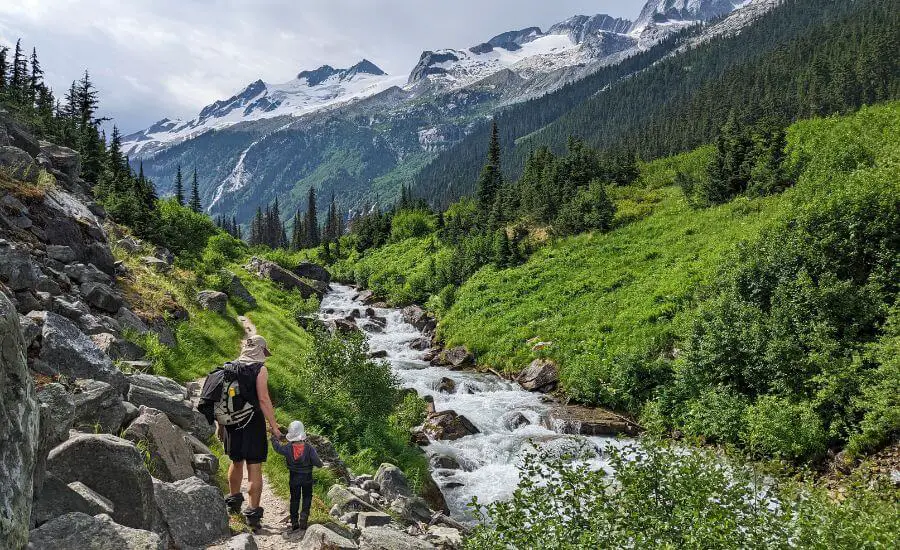
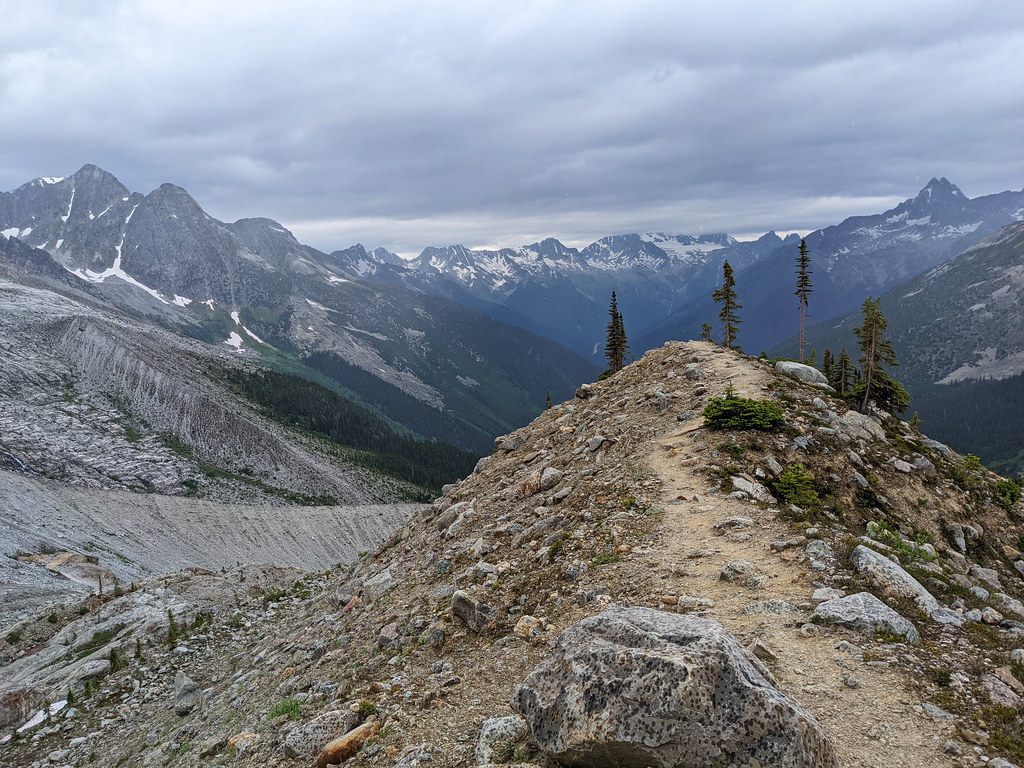







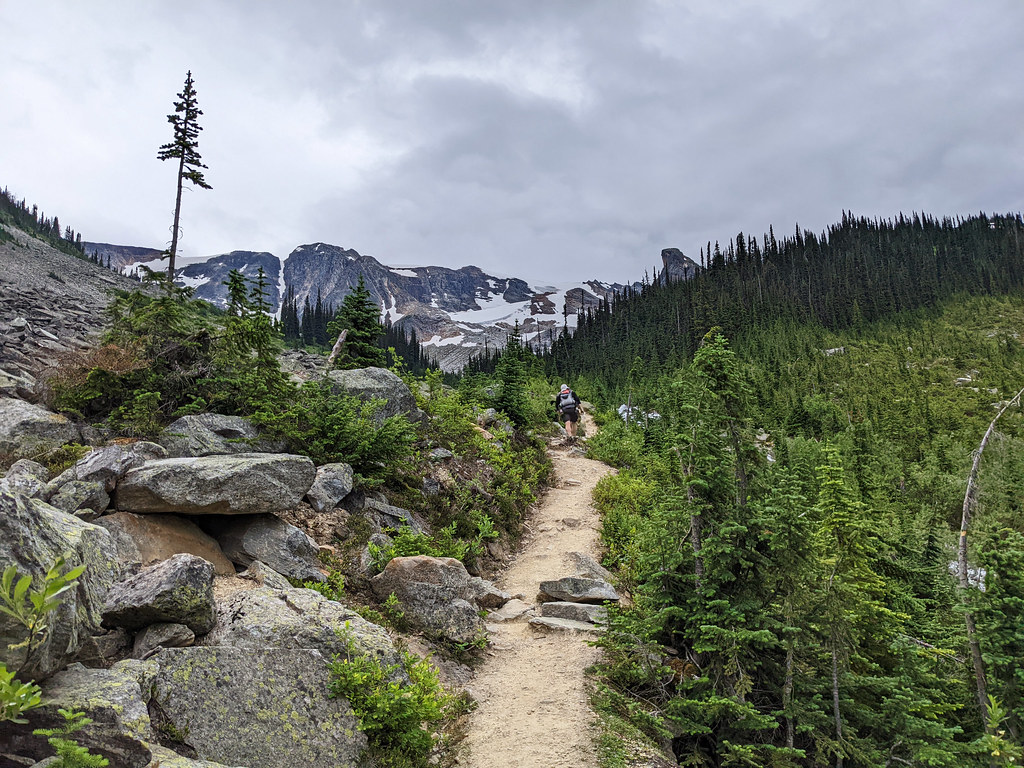





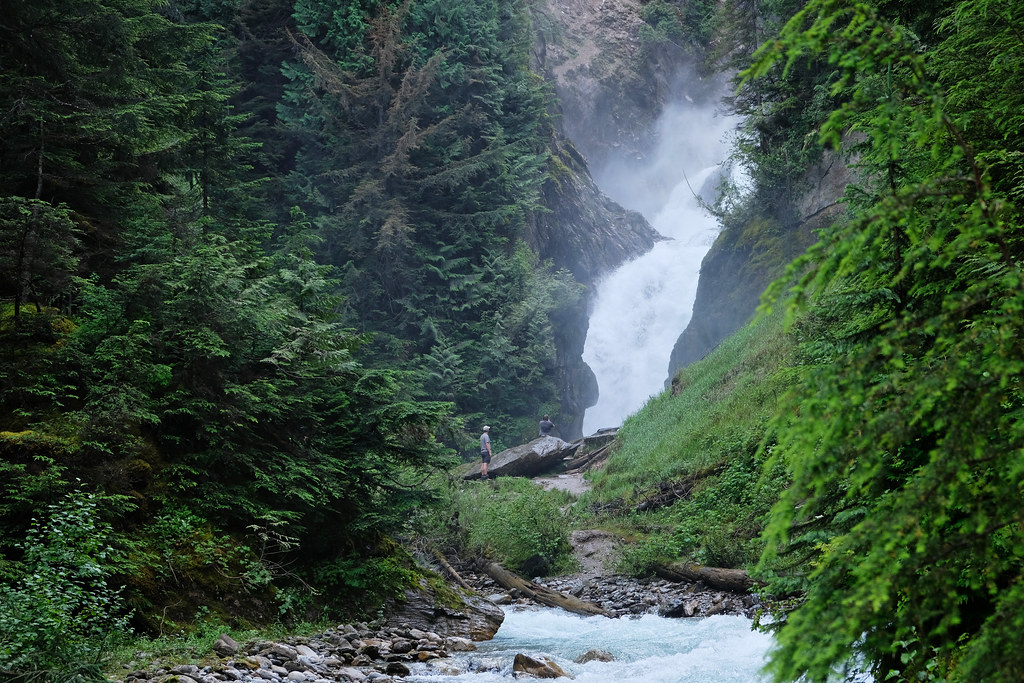
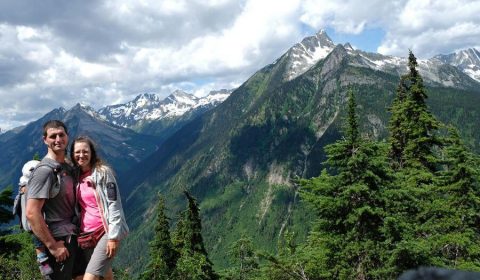
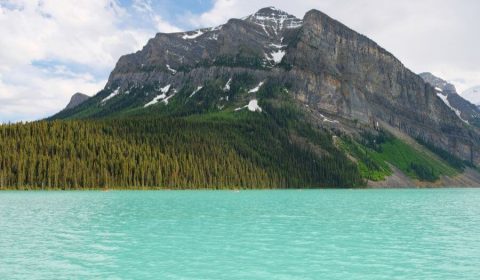
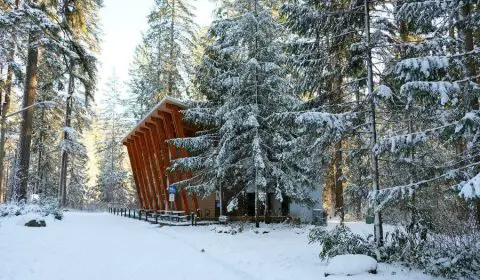
Leave a Reply